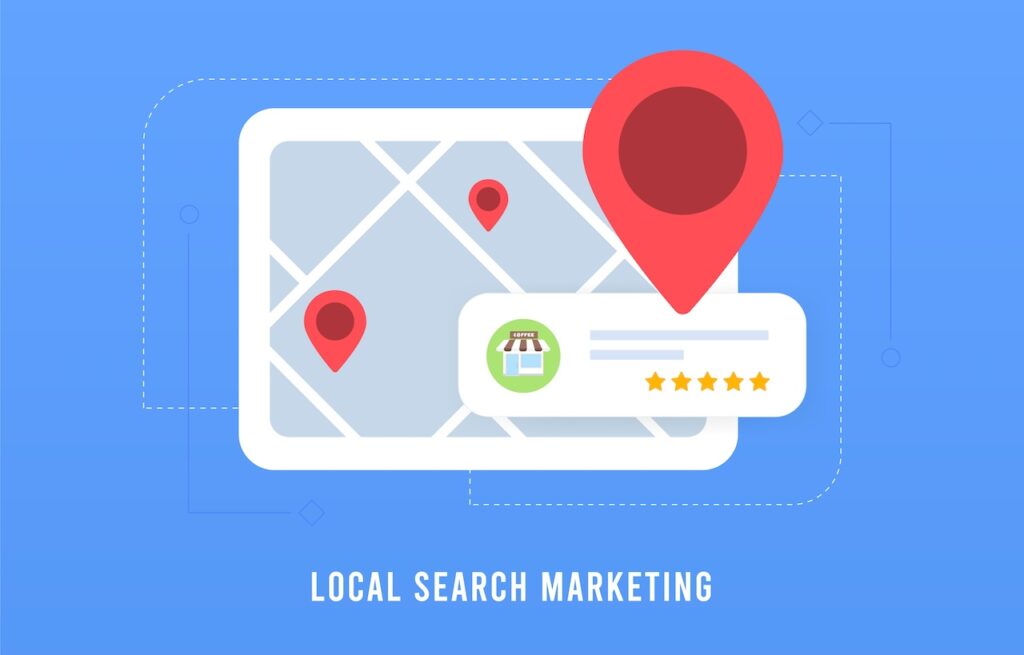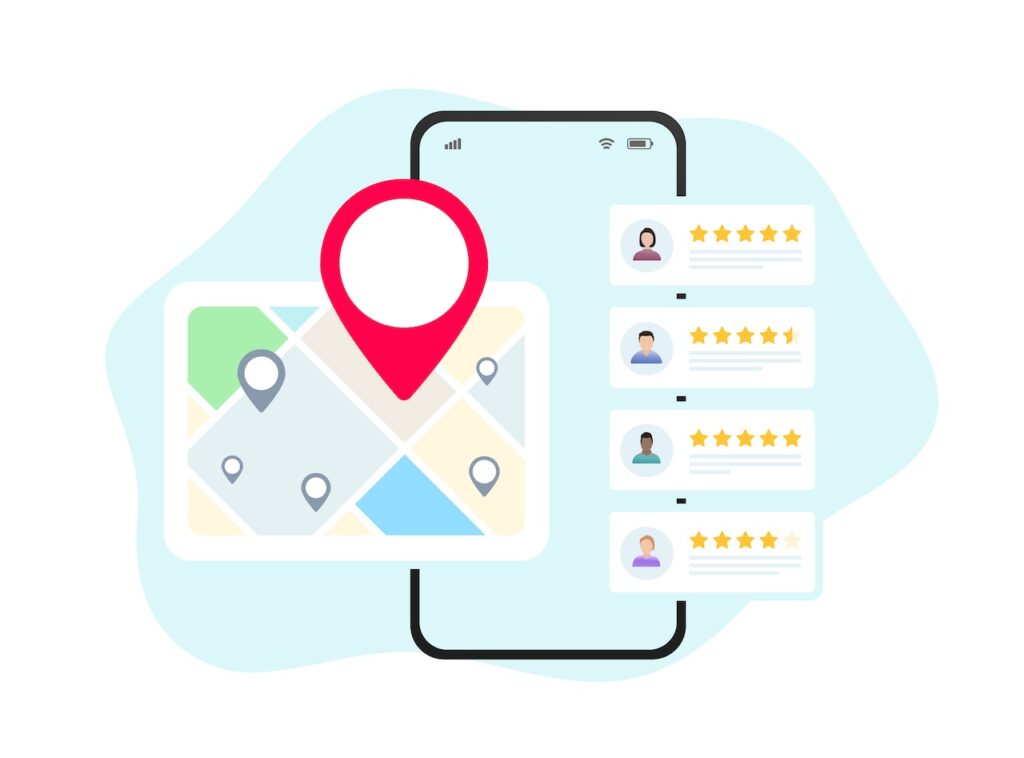Local SEO Glossary and All Terms You Need to Know

Here at Woobound Marketing, we understand that the digital marketing landscape can often feel like navigating through a dense forest – full of unknown terms and paths that seem to twist and turn unexpectedly.
That’s exactly why we’ve put together two comprehensive glossaries dedicated to unraveling the complexities of SEO (Search Engine Optimization) and Local SEO. Whether you’re a business owner seeking to enhance your online visibility, a marketer looking to sharpen your SEO skills, or simply curious about the mechanics of search engines, these glossaries are tailored just for you.

Local SEO Glossary
For businesses targeting a local clientele, mastering Local SEO is crucial. Our Local SEO glossary demystifies terms such as Google Business Profile (GBP), NAP consistency, Local Pack, and more, providing you with the knowledge to captivate your local audience effectively. Whether you’re a brick-and-mortar store, a service area business, or a company aiming to boost its local online presence, this glossary is crafted to set the foundation for your Local SEO success.
Local SEO
The practice of optimizing a business’s online presence to attract more business from relevant local searches. These searches take place on Google and other search engines.
Google Business Profile (GBP):
A free tool provided by Google that allows business owners to manage how their business appears on Google Search and Maps. This includes adding your business name, location, and hours; monitoring and replying to customer reviews; adding photos; learning where and how people are searching for you, and more.
NAP (Name, Address, Phone Number):
Refers to the consistent use of a business’s name, address, and phone number across all online platforms and directories. Consistency in NAP information is considered a local search ranking factor.
Local Citations:
Any online mention of the name, address, and phone number for a local business. Citations can occur on local business directories, websites, apps, and social platforms. Citations help Internet users discover local businesses and can impact local search engine rankings.
Local Pack:
A section of Google’s search results that shows the local businesses related to your query. The local pack display typically shows a map with pinned locations, alongside business listings with important information such as the business name, address, hours, and reviews.
Reviews and Ratings:
Feedback left by customers on your GMB profile or other review sites. Positive reviews and high ratings can improve a business’s local search rankings and influence potential customers.
Local Keywords:
Keywords that contain a specific location and are used by individuals searching for businesses, products, or services in their area. For example, “coffee shop in downtown Chicago” is a local keyword.
Local Content:
Content created with a local audience in mind. This could be blog posts about local events, news, or activities relevant to the business’s location and industry.
Backlinks:
Links from one website to another. In local SEO, high-quality, relevant backlinks can help improve a site’s ranking in local search results.
Mobile Optimization:
The process of adjusting your website’s design, content, and structure to ensure it offers an optimal experience for users on mobile devices. This is critical for local SEO as a significant portion of local searches are performed on mobile devices.
Schema Markup (Structured Data):
A code that you put on your website to help search engines return more informative results for users. For local businesses, using local business schema can help search engines understand and display your business information in rich snippets and knowledge graphs.
Local Link Building:
The process of obtaining links from other local businesses and organizations to boost local SEO efforts. These links can help establish a business’s relevance in a local context.
Google Posts:
A feature within Google My Business that allows businesses to create content directly on Google, which appears to customers in Google Search and Maps. Posts can be used to promote events, offers, news, and products.
Service Area Business (SAB):
A type of Google My Business listing for businesses that serve customers at their locations. For example, a plumbing company or home repair service might define a service area instead of a single business address.
Google Maps Marketing:
The process of using Google Maps’ functionality to make your business easier to find. This can involve optimizing your Google My Business listing to appear more prominently in local searches.
SEO Glossary and Terms

Embark on a journey through the vast world of SEO with our detailed glossary. From keywords to backlinks, SERPs, and beyond, we’ve compiled the essential terms and definitions that will empower you to navigate the SEO landscape with confidence. This glossary is your compass, designed to guide you through the optimization process and help you understand how to make your website not just visible, but prominent in search engine results.
SEO (Search Engine Optimization):
The practice of increasing the quantity and quality of traffic to your website through organic search engine results.
Keyword:
A word or phrase that users enter into search engines to find specific information. Optimizing your website for relevant keywords helps improve its visibility.
SERP (Search Engine Results Page):
The page displayed by a search engine in response to a user’s query. This page lists the websites that are most relevant to the user’s search query.
Backlink:
A link from one website to another. Backlinks from reputable sites can help improve a site’s SEO ranking because they indicate the content is valuable.
On-Page SEO:
The practice of optimizing individual web pages in order to rank higher and earn more relevant traffic in search engines. This includes content and HTML source code optimization.
Off-Page SEO:
Techniques used to improve the position of a website in the search engine results page (SERPs) that are not performed directly within the website itself. This mainly involves link building and social media marketing.
White Hat SEO:
SEO techniques that follow search engine guidelines and involve no deception. It focuses on providing users with the best and most relevant content.
Black Hat SEO:
SEO tactics that attempt to improve rankings in ways that are disapproved of by search engines and/or involve deception. This includes keyword stuffing, cloaking, and using private link networks.
Grey Hat SEO:
Techniques that fall somewhere between white hat and black hat SEO. These tactics are often not specifically called out in search engine guidelines as bad, but are more speculative and could become black hat SEO over time.
Anchor Text:
The visible, clickable text in a hyperlink. SEO best practices suggest that anchor text be relevant to the page you’re linking to, rather than generic text.
Domain Authority:
A score (on a 100-point scale) developed by Moz that predicts how well a website will rank on search engines.
PageRank:
An algorithm used by Google Search to rank web pages in their search engine results. It is named after Larry Page, one of the founders of Google.
Meta Tags:
Snippets of text that describe a page’s content; they don’t appear on the page itself, but only in the page’s code. Common meta tags include the title tag, meta description, and keyword tag.
Alt Text (Alternative Text):
A description of an image in your site’s HTML. Search engines use alt text to understand what an image is about, which can affect image search rankings.
Crawl:
The process by which search engines discover updated content on the web, such as new sites or pages, changes to existing sites, or dead links.
Indexing:
The storing and organizing of content found during crawling. Once a page is in the index, it is in the running to be displayed as a result to relevant queries.
Canonical Tag:
A way of telling search engines that a specific URL represents the master copy of a page. It helps to prevent problems caused by identical or “duplicate” content appearing on multiple URLs.
Robots.txt:
A file that tells search engine crawlers which pages or files they can or can’t request from your site.
Sitemap:
A file where you provide information about the pages, videos, and other files on your site, and the relationships between them. Search engines read this file to more intelligently crawl your site.
Long-Tail Keywords:
Longer and more specific keyword phrases that visitors are more likely to use when they’re closer to a point-of-purchase or when they’re using voice search.
At Woobound Marketing, we believe in empowering our clients and readers with knowledge. Understanding the terminology is the first step in leveraging SEO and Local SEO to your advantage. As you explore these glossaries, remember that our team is here to help you apply these concepts, strategize, and ultimately, thrive in the digital space. Let’s grow together!
Welcome to your SEO journey, and happy optimizing!





